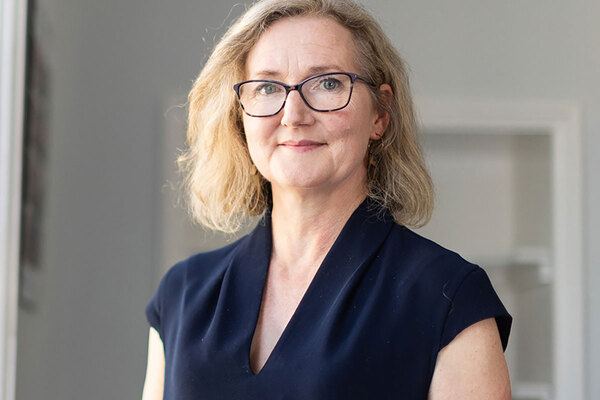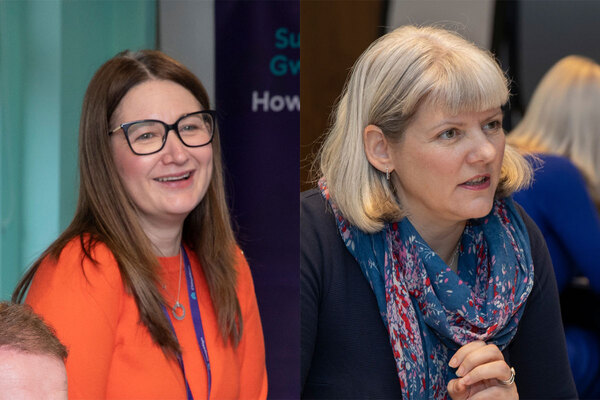You are viewing 1 of your 1 free articles
Will we be more prepared for technological disruption than we were for the pandemic?
For various reasons, the likelihood of significant technological disruption is inescapable for society and businesses. Like the current pandemic, this will not be an unpredictable bolt from the blue. But, James Tickell asks, how ready are social landlords?
As it turned out, global pandemics were not on anyone’s risk maps, and COVID-19 took us all by surprise. So far, a few organisations have prospered mightily, many have survived, while quite a number are unfortunately going to the wall. The economic and social consequences will be with us all long after the medical crisis is over.
With the benefit of hindsight, COVID-19 was not an unpredictable bolt from the blue. Just beyond living memory, the Spanish flu of 1919 was deadlier and more infectious, not to mention the medieval Black Death. The so-called Asian flu of my childhood was nasty; Ebola fever was nastier still, although luckily less infectious. HIV/AIDS has killed millions, while SARS and MERS were lucky escapes. Foot and mouth, swine flu, bird flu, I could go on. All in all, the fact that new bugs sometimes come along, and then wreak varying degrees of havoc, has always been staring us in the face.
After COVID-19, other pandemics will follow, whether soon or in the time of our grandchildren. Maybe we will be better prepared next time around. I hope so. For now, let’s at least plan for drastic post-pandemic unemployment and poverty, while hoping that things turn out better than feared. But what other major risks may be lurking round the corner?
There’s no point worrying too much about ‘game over’ asteroid strikes and nuclear wars. But extreme climate events – tornadoes, floods, droughts, sea wall breaches and the like – do demand consideration. Even now, the old ‘once in a hundred years’ storms seem to pop up annually. Let’s agree, then, that risk maps are not complete without a chunky climate change section. The opportunities to try out the mitigations will be tested soon enough. Recent devastating floods in Herefordshire, even a tornado near Birmingham and houses falling into the North Sea are a hint of what may be coming.
But just to cheer up readers, there are other events that could shine down upon us from on high. These also deserve consideration and mitigation, and could equally challenge our resilience. Who has heard of the 1859 Carrington Event, named for the astronomer who observed it? Or the 1989 Quebec coronal mass ejection? No? Read on.
“There’s no point worrying too much about ‘game over’ asteroid strikes and nuclear wars. But extreme climate events – tornadoes, floods, droughts, sea wall breaches and the like – do demand consideration”
In 1859, a major solar storm sent out a geomagnetic pulse, which directly hit Earth 18 hours later. The night sky lit up like the Northern Lights on steroids. More significantly, the new global telegraph system was massively disrupted. Some operators experienced burns or electric shocks. Wires hummed and glowed, with some melting. And then it was over. Wires were replaced, and things got back to normal quickly enough. There were no computers, fly-by-wire planes or geolocation satellites to worry about.
If the same event happened now, the story would be different. Satellites could stop working; planes in flight could fall from the sky. The electronics in cars, power stations, networks and so much more besides could be out of action for a while. The effects could be global, or (hopefully) more local. In 1989 in Quebec, a similar but regional event took out power generation for nine hours and caused a range of damage. More alarmingly, the US military wondered whether a Russian nuclear strike was impending, but luckily concluded that it was not.
The point here is that, as with pandemics, we know perfectly well that these things happen, albeit randomly and only every once in a while.
In this century, there have been six relatively minor events to date; in the 20th century around a dozen of significance were recorded. None of these were on the scale of the Carrington Event, although in 2012, a massive solar flare missed our planet, and blasted on harmlessly towards deep space. Had it hit us full-on, the costs to the global economy would have been as much as $10tn.
So, if the Carrington Event is history’s Spanish flu of solar flares, it stands to reason that such happenings need to be on our collective risk radars. Harvard scientists estimate that there is a 12% chance of such an event in any given decade. Not bad odds, but not to be disregarded either.
Realistically, a mega-Carrington solar flare hitting Earth is another ‘game over’ event, along with the dreaded asteroid. Without technology for months, cities would rapidly become unviable and we’re into the territory of Mad Max and beyond. More likely, and more worth thought, is a lower level of disruption, hitting some regions and technologies, as in Quebec. The precise results of a large but non-catastrophic solar flare cannot be predicted in detail, but are about as likely as was COVID-19 this time last year.
Central and local government disaster planners need to take the lead, of course, but other organisations need to be thinking about the questions raised. How would we manage without IT systems and mobile phones, maybe for days or even weeks? What if the National Grid needed massive repairs and the power was off for some time? How could we source materials and components locally, if national distribution networks couldn’t function? How could we work with our tenants and local communities to respond on the ground?
“Central and local government disaster planners need to take the lead, of course, but other organisations need to be thinking about the questions raised. How would we manage without IT systems and mobile phones, maybe for days or even weeks?”
In simple terms, there is a thought experiment, along the lines of: “How would we cope if our computer systems couldn’t function for a month?”
COVID-19 has painfully reminded us of the complexity (and thus fragility) of advanced technological human society. There will surely be other unwelcome events to come, sooner or later, whether pandemics, floods, solar flares, national-level cyber attacks or something less evidently foreseeable. The likelihood of technological disruption is inescapable.
Developing greater resilience is thus urgent, for all society. We need to plan imaginatively for a range of scenarios, and for how we would survive them. Local and community solutions will be a vital element within those plans, but above all, the thinking must be done before the next crisis strikes.
One thing seems certain: In the longer term, no nation or organisation can afford to postpone or avoid investment in its own resilience.
James Tickell, partner, Campbell Tickell












